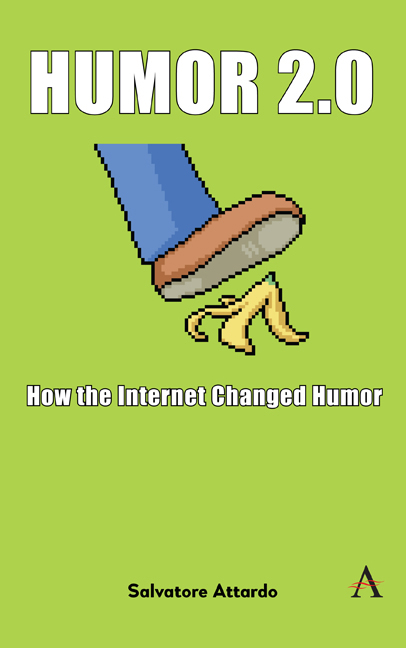20 - Humor Videos
Published online by Cambridge University Press: 28 February 2024
Summary
I think it is fair to say that the short form video is one of the main innovations, humor-wise, of the internet. It is very clear that without ubiquitous camera-equipped smartphones the low-fi, video-selfie or video capture would not exist. This is a great example of how the affordances of the technology determine what is feasible. It is not a coincidence that the release of the iPhone 6 featured an ad campaign “shot on iPhone” (which of course has its own satirical memes: https://knowyourmeme.com/memes/shot-on-iphone).
The smartphone videos are essentially the realization of the prophetic vision of the caméra stylo (“videocamera pen”) articulated by French film critic Alexandre Astruc (1948) and taken up by the French Nouvelle Vague (e.g., Truffault, Godard) in the form of handheld 16mm cameras and minimal or ambient lighting. Exactly as Astruc had claimed, the filmographer “writes” their personal experience through the camera as if it were a pen. The effect of immediacy and authenticity is striking. Of course, none of this is in the mind of teenagers filming themselves drinking bubble tea or playing video games; quite simply, the tool does what it's supposed to do, using autofocus, stabilization, etc., to produce passable video. The phone even finds people's faces for you.
People have been shooting video of themselves and their friends and families since 16mm and 8mm cameras have been available. Once more, the contribution of the internet and of services like Vimeo and YouTube has been to allow for easy and vitally cost-free distribution, without passing by a broadcast medium (such as America's Funniest Home Videos see Chapter 5).
Say Hello to My Little Friend: Vine's 6-second Videos
Vine was a video sharing app, acquired and launched by Twitter in 2012–2013 to immediate success. It let users share easily 6-second video clips (“vines”). The clips were recorded directly into the app and could be uploaded very easily. A feature of the vines is that they looped, which allows one to watch it repeatedly. Aside from music and dancing videos, one of the most successful genres were funny videos (Holt, 2013). Vine was discontinued by Twitter, in 2016, but the videos are still available online; for example, search for “best of vines” on YouTube, Google or Facebook. For more technical detail on how Vine operated, see Zhang et al. (2014).
What do vines look like?
- Type
- Chapter
- Information
- Humor 2.0How the Internet Changed Humor, pp. 197 - 206Publisher: Anthem PressPrint publication year: 2023

